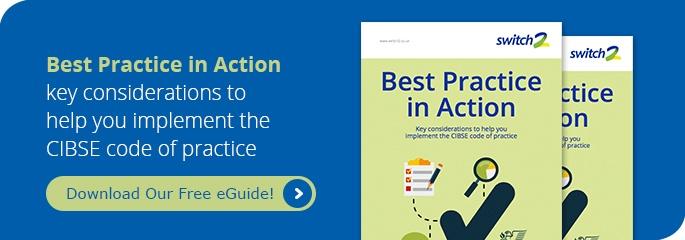In an article written for Energy Management magazine, Ian Allan, Head of R&D for community heating specialist Switch2 Energy, explains the latest legislative changes affecting the UK's communal energy and district heating schemes and what they mean for heat suppliers.

The UK Government introduced The Heat Network (Metering and Billing) Regulations in 2014, which covers every community and district heating system across the country. Important updates to the regulations were announced by the new Department for Business, Energy and Industrial Strategy (BEIS) towards the end of 2016.
With relatively few exemptions and criminal/civil penalties for non-compliance enforced robustly by BEIS, it is crucial that those responsible for heat networks understand the obligations and potential benefits
Legislation at a glance
The UK regulations relate to the distribution of thermal energy from a central source to more than one end user, building or location for the purposes of heating, cooling or hot water supply. The 'heat supplier', which is the person or body ultimately responsible for supplying and charging the 'final customer' (who consumes the heat), is obligated to meet three key stipulations:
1. Notification
Heat suppliers must inform BEIS about the location of any district heat network or communal heating scheme - as well as its capacity and supply figures. Each building forming part of the network has to be identified, along with the number of customers using it and how they receive information from billing partners. Registrations must be updated within four years of the initial registration, which was the end of 2015, and every four years after that.
2. Metering
It is mandatory to install point of entry, or ‘bulk’ meters (which record the amount of heat delivered into the property) for buildings with one or more customers connected to a district heat network.
It is also mandatory to install final customer meters on new builds and most buildings undergoing major renovation. If these meters are not feasible, the viability of heat cost allocators must be considered. The meters require scheduled servicing alongside periodic recalibration of heat cost allocators.
The latest major change to the legislation is a postponement of the original December 2016 deadline to fit final customer meters to existing unmetered properties. This is due to withdrawal of the original feasibility tool, that is intended to indicate the viability of retrofitting meters to existing district heating schemes. The original feasibility tool was considered not fit for purpose and is expected to be revised in 2017 following consultation, with the deadline for retrofitting final customer meters being extended to late 2017 or early 2018.
If the feasibility tool is used by a heat supplier to opt-out of installing meters, the 'grace period' is only likely to be temporary. That's because the regulations demand that the feasibility test should be repeated every four years and it is expected that all heat networks will need to be fully metered over time
3. Billing
End customers must be billed using actual meter readings (rather than estimates) at least once a year. However, customers using electronic billing should be invoiced quarterly. Bills must contain current energy prices, details of total consumption (compared to the previous year, if applicable) and general information on how to improve energy efficiency. This is subject to feasibility, however, the bar has been set reasonably high so the rulings will apply in all but a few cases.
The legislation imposes duties on the heat supplier, but BEIS has issued guidance on how these responsibilities may be shared between billing managers and network managers or owners. Internal discussions will be required to establish who is best placed to undertake the billing duties imposed by the legislation.
The impact of Brexit?
Although the regulations stemmed from the EU Energy Efficiency directive, the UK remains committed to carbon reduction and energy efficiency and the role of heat networks in achieving that aim, irrespective of Brexit. As a signatory to the Paris Agreement on climate action and due to the UK's commitment to global energy reduction, it is unlikely that the Heat Network Regulations would be withdrawn.
Benefits of smart metering
Smart metering strategies are crucial to reducing energy waste since heat customers can see exactly how much energy they are consuming and paying for and, hence, are able to make informed decisions about reducing their consumption. In our experience, where we have installed smart metering and pay-as-you-go billing, heat usage has been reduced by up to 50%, compared to unmetered dwellings.
Switch2's smart metering partnership with Sheffield City Council is dramatically reducing energy consumption across 6,000 homes connected to its heat network. This is predicted to reduce customers' total annual bill by £1.4 million.
The regulations for metering also offer benefits for heat suppliers. Closer monitoring of district heat networks will provide more opportunities to identify heat loss throughout the network, which could improve operating efficiency. More detailed bills will reduce the volume of customer enquiries about costs and charges, and establish greater trust between suppliers and end users.
To read the article in the Energy Management Magazine:Click here.



